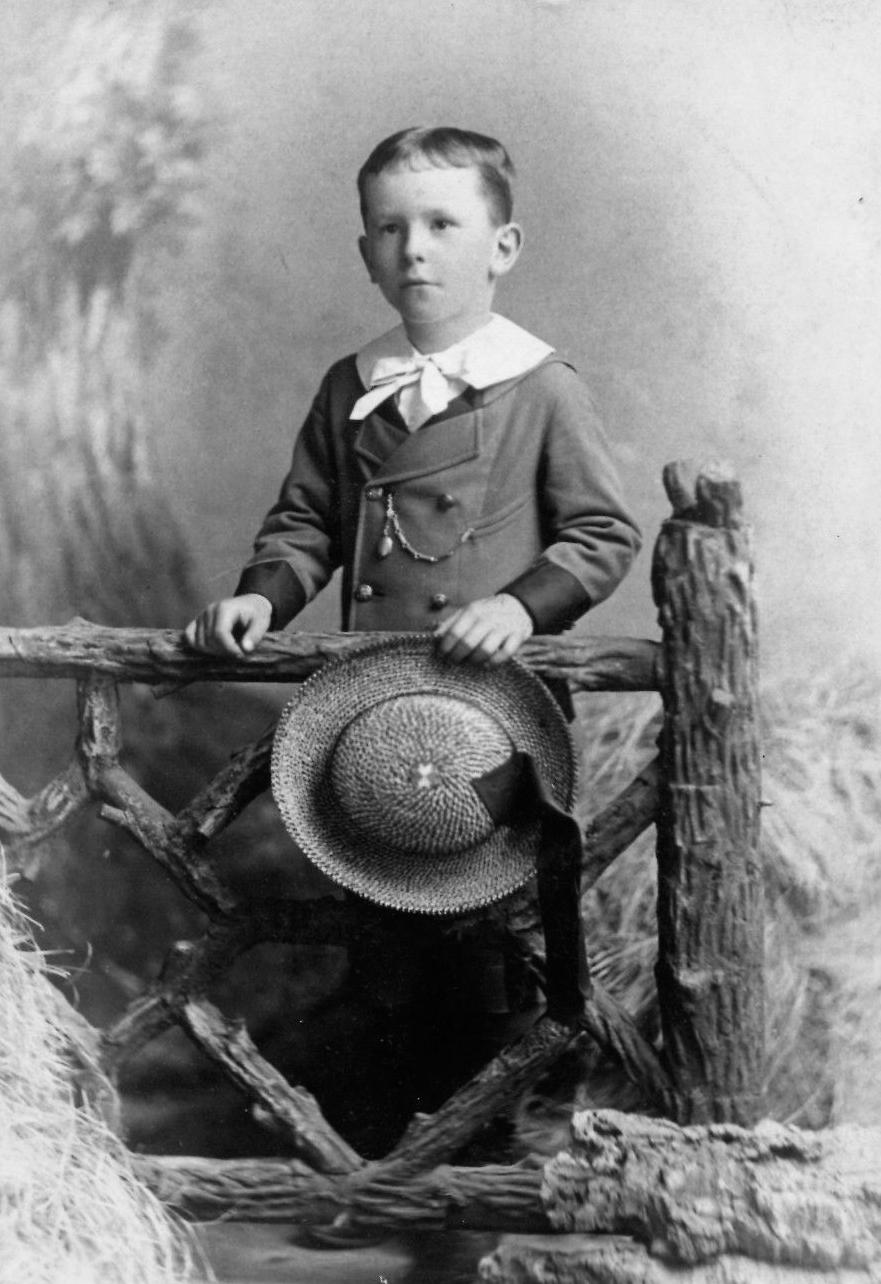
United States Boys' Headwear: Associated Items

Figure 1.--This unidentified New York boy pictured in a cabinet card portrit has an Eton collar, watch fob, and broad-brimmed sailor hat. Notice the streamers. Rarely are the streamers so clearly shown. There seemti be two streamers, vut rather thicjly, and without firked ends. The boy looks to be about 5 years old. We are not sure about the date, but would guess the portrait was taken abut 1880. The photographer was the Kurtz Studio at Madison Square, New York. The stidio seems to have been a high-end studio which had many prize awards.
|
|
|
Both caps and hats may have a variety of asociated items. Sometimes they do not show up on the photographic record, but our archive is large enough that we have found examples. Three of the most important are chin straps, bands, and streamers. They are used in many different types and styles of headwear. These decorative items are especially associated with sailor headwear, in part because they actually were used with sailor uniforms. For the children they were decorative features. Streamers were very popular, especially with sailor headwear, but we also nitice them with Scottish headwear. Sailor styles were, however much more common. The problem with streamers is that they often are not observable in standard portraits which are usually frontal shots. Hat bands on sailor headear are called tallies and had the name of the ship that the sailor was serving on. These bands are most associated with hats, but sailor caps were also done with bands/tallies. They commonly ended in streamers. We also notice chin straps on sailor caps and hats. We believe chin staps were fairly common, at least in the 19th century, but rarely show up in the photographic record. This does not mean, however, that the hats and even caps did not have them. They probably were most common with broad-brimmed sailor hats. Less common were embroidered emblems on sailor caps. This may have been more common in Europe.
Streamers
Streamers were very popular, especially with sailor headwear, but we also notice them with Scottish headwear. Sailor styles were, however much more common. The problem with streamers is that they often are not observable in standard portraits which are usually frontal shots. It is only with images such as the portrait here that we can be sure (figure 1). Thus we do not have a good idea as to how prevalent they were. Many hats did not have streamers, even during the era tht they were particularly popular. A good example is a rounded crown hat held by Carl Schader in 1885. Thus at this time we are just not sure how common they were. Streamers could vary in length, width, number, and colors. Many ended with a forked cut. As they are motly behind the subject in a studio portrait, it has not been easy to assess the trends. Much of what we know is when the boy is holding his headwear or mother has placed it on the ground or a table. This was not always the case which is too bad because almost always in the 19th century, if a boy is dressed up, he had some sort of headwear. And of course we have virtualy no color information with the black-and-white photography of the 19th century and the early-20th century when streamers were most commonly part of headwear.
Bands
Bands are generally associated with hats, but some caps also had bands. We see sailor hats and caps with bands called tallies. These tallies had the name of the ship that the sailor was serving on. We had thought that the bands on sailor hats and caps commonly ended in streamers, but here the stramers seem to be separate gtom the hat band (figure 1).
Chin Straps
We also notice chin straps on sailor caps and hats. We believe chin staps were fairly common, at least in the 19th century. This depended somewhat on the type of headwear. They seem epoecilly common with sailor headwear. They rarely show up in the photographic record, this does not mean, however, that the hats and even caps did not have them. They probably were most common with broad-brimmed sailor hats. Chin straps commonly could be folded into the crown of the hat or cap and this are more common thn sujected by the photographic record.
Embroidered Emblems
Less common were embroidered emblems on sailor caps. This may have been more common in Europe.
HBC

Navigate the Boys' Historical Clothing Web Site:
[Return to the Main U.S. headwear page]
[Return to the Main U.S. country garment page]
[Introduction]
[Activities]
[Biographies]
[Chronology]
[Clothing styles]
[Countries]
[Bibliographies]
[Contributions]
[FAQs]
[Glossary]
[Images]
[Links]
[Registration]
[Tools]
[Boys' Clothing Home]
Created: 5:12 AM 3/5/2015
Last updated: 5:12 AM 3/5/2015



